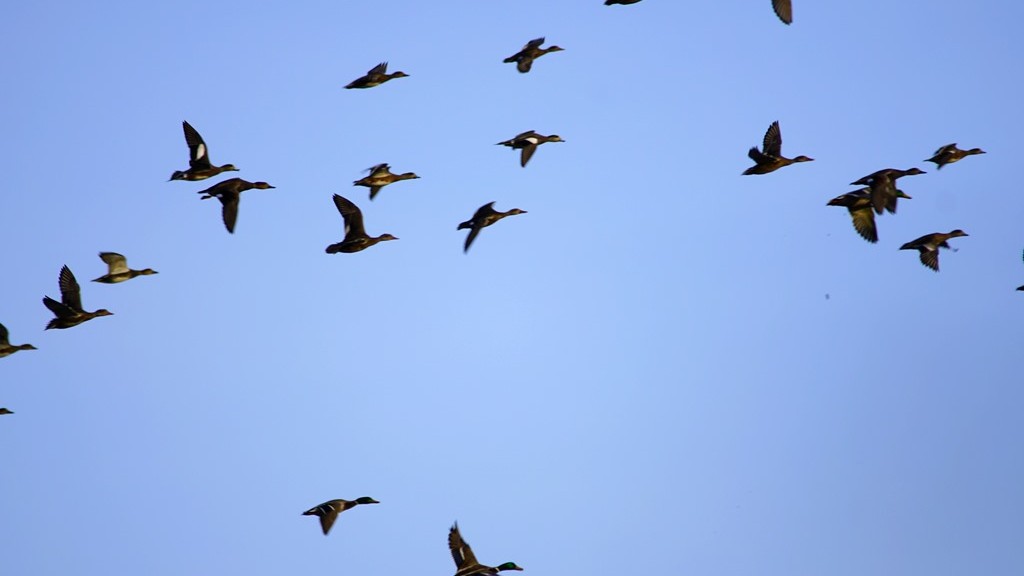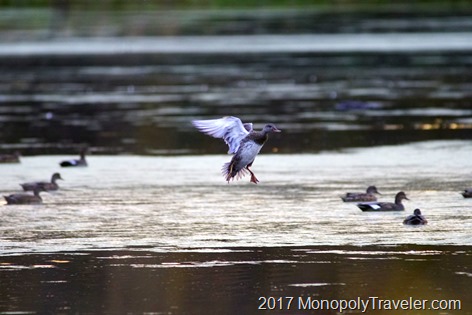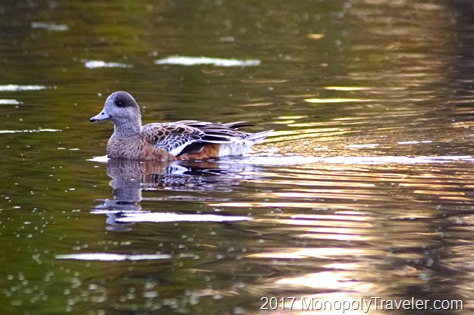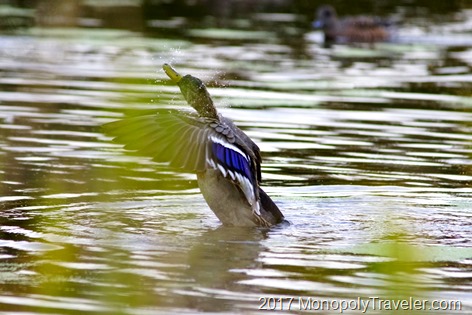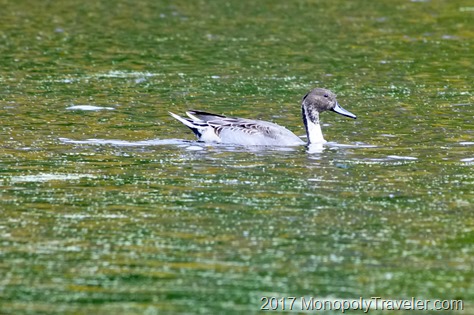Over the past couple of weeks I’ve been in pursuit of ducks beginning to move south stopping by local lakes to rest and feed before moving on. In this particular area there have been flocks of hundreds of ducks making it very enticing to set up the camera and wait for them to move closer.
It’s been fun to photograph them and then try and identify what type of duck it is afterwards. This particular flock of ducks has included Widgeons, Gadwall, Mallards, Wood ducks, and one immature pintail. They sure are pretty to watch with the different colors and patterns as well as listen to. Each with a unique sound identifying the species further.
While most of the ducks on this particular lake seem to be widgeons there are some gadwalls mixed into the flock. I wasn’t sure at first if it was a different duck or if it was just an immature widgeon still coloring up. Looking further I noticed the bill on the gadwalls is darker than with widgeons. Also the white spot on the back of the duck is different and the head has slightly different colorations confirming a different species later identified as gadwalls. Ohh and they make a different sound which helped figure this out.
Included in all these ducks are, of course, mallards which tend to be very plentiful on most bodies of water in Minnesota and elsewhere. One of the nice things of having mallards around is other ducks see them and figure it’s a safe place to land with food available so join them. The mallard below was shaking off water after spending time under the surface looking for food.
One of the unique ducks in this particular flock is an immature pintail. I wasn’t completely sure of this immediately because the coloration is different from the others but not as well defined as the photos I was comparing it too. A couple of things that helped I.D. it was when it tipped into the water in search of food the tail was more of a point and more pronounced than the widgeons and gadwalls but still lacked the characteristic long pin tail giving these there name. Also the colors on it’s head, while not completely developed, still matched well with the pictures I was comparing it to leading me to figure out this is a young pintail. This duck has continued to stay with this flock for the past couple of weeks with no other pintails in sight.
I’ve definitely been enjoying photographing each of these different species and hopefully will be able to catch a few more before these lakes freeze over.

